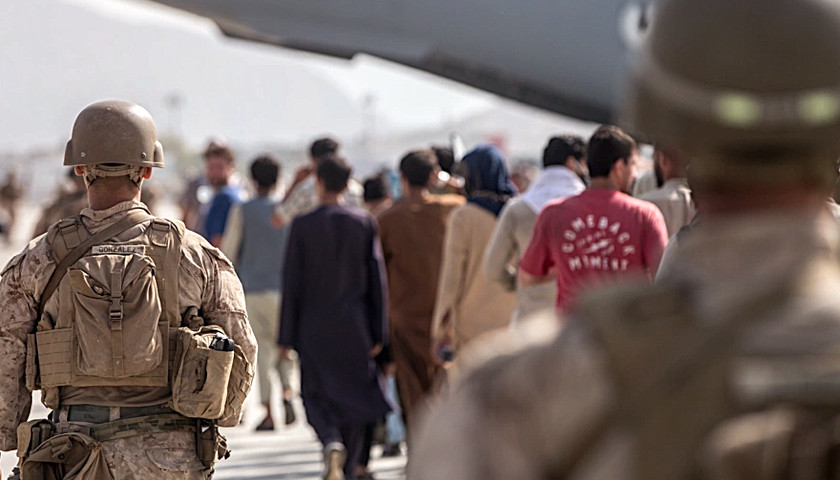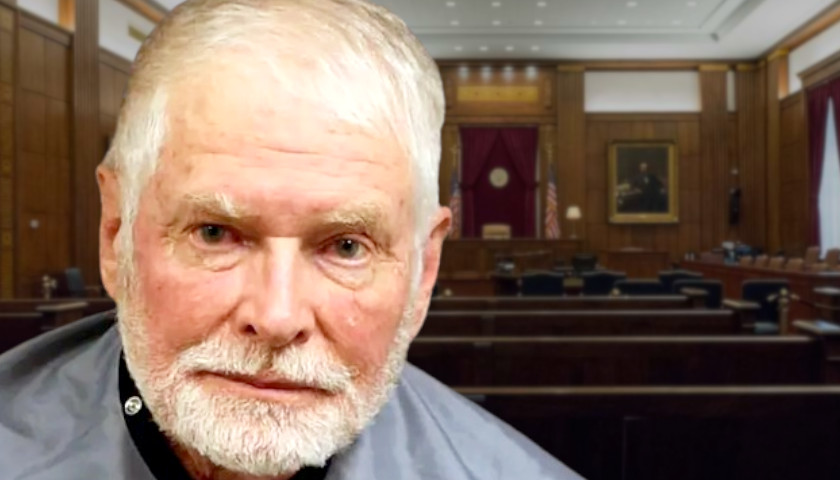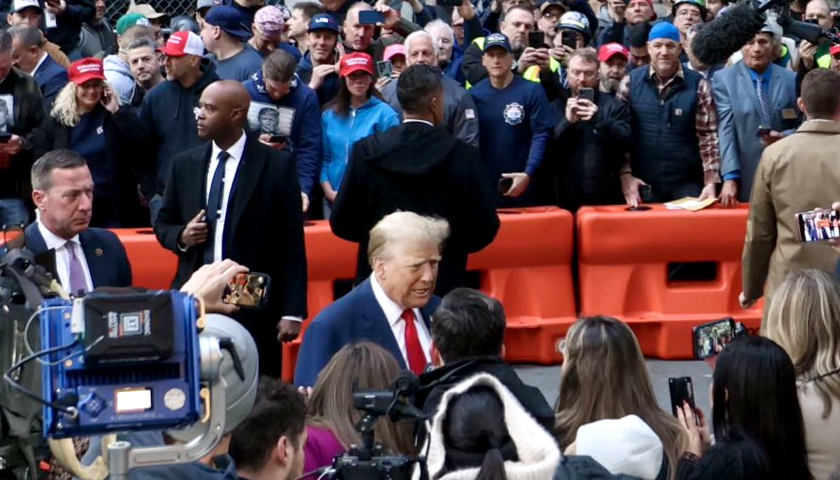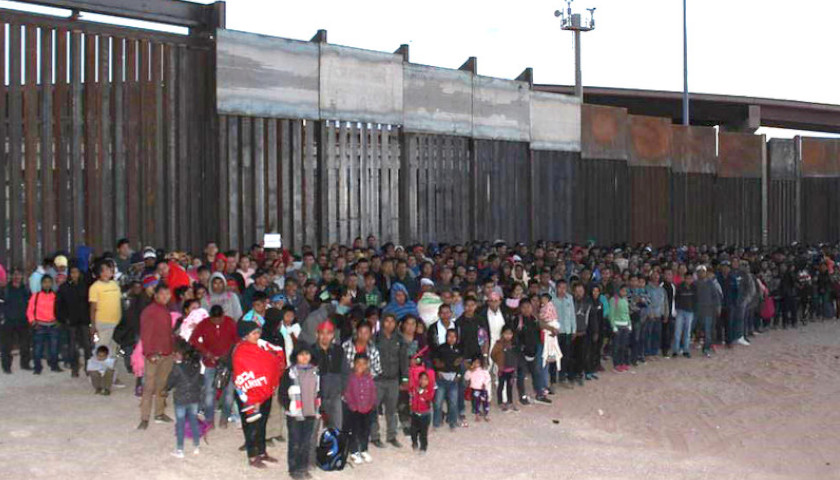by Philip Wegmann
New testimony from those who witnessed firsthand the confusion and chaos of the Afghanistan withdrawal further contradicts President Biden’s assertion that the hurried and violent end to the longest war in American history was an “extraordinary success.”
In a transcribed interview before the House Foreign Affairs Committee, former Foreign Service officer Samuel Aronson said the very opposite in living, harrowing color. “Let me be clear,” he told lawmakers behind closed doors, “I cannot call this evacuation a success.”
The questions and answers from Aronson, who received a State Department commendation for his heroism during the evacuation, as well as Ambassador Ross Wilson, the last U.S. diplomat to leave Afghanistan, were obtained by RealClearPolitics and have not been published previously.
Aronson recounted how American citizens, including children, were beaten by the Taliban, how U.S. passports were burned in a moment of panic when it seemed that Hamid Karzai International Airport in Kabul was about to be overrun, and how he delivered “a horrible choice” to a young Afghan mother.
“Get on the airplane and never see your husband again or exit the airport and lose your only chance at freedom,” Aronson told her, recalling for lawmakers the bleak exchange that summarized the mismanagement, and at times bureaucratic incompetence, of an evacuation that Biden himself had vowed would not be “at all comparable” to how the U.S. left Vietnam.
“There’s going to be no circumstance where you see people being lifted off the roof of an embassy,” Biden told reporters in July 2021 as American forces began their withdrawal. The president insisted that after two decades of U.S. support, the Afghan army was well-equipped, well-trained, and capable of prosecuting their own war. They were not.
Kabul fell to the Taliban on Aug. 15, the day the U.S. Embassy was evacuated. Emergency operations subsequently shifted to HKIA. What some call chaos followed.
Aronson recalled hotwiring buses to ferry the massive crush of humanity that descended on the airport and the sometimes impossible task of determining who should and should not be allowed inside the gates. He rejected the characterization later offered by State that the Taliban, whom the U.S. relied on at times to facilitate the departure of American citizens, was “businesslike and professional.”
The transcripts come nearly one year after the White House released a short summary of the “hotwash” review of U.S. Afghanistan policy. The administration took little responsibility for its actions, arguing instead in that document that Biden was “severely constrained” by decisions made by President Trump, specifically the U.S.-Taliban Doha agreement.
“For all this talk of chaos, I just didn’t see it, not from my perch,” National Security Council spokesman John Kirby said as he argued back and forth with reporters when that document was released. Kirby served as Pentagon spokesman during the withdrawal and noted that flights left the airport “every 48 minutes” during the evacuation. “So I’m sorry,” he concluded, “I just won’t buy the whole argument of chaos.”
Managing the situation on the ground fell to Wilson, acting ambassador to Afghanistan. He testified that planning for a noncombatant evacuation operation (also known as an ‘NEO’) began in the spring of that year, and that Secretary of State Antony Blinken ordered the evacuation at his recommendation after the Taliban entered Kabul.
Wilson told lawmakers, however, that he was not directly involved in planning the operation. He also appeared unaware more than two years later that, per Department of Defense policy, he bore ultimate responsibility for the evacuation. “I believe that it was the responsibility of the chief of mission to call for an evacuation,” he testified, adding later that the operation itself would be carried out by “combatant command personnel who were not going to take orders from me.”
The generals in charge during the withdrawal have subsequently slammed the State Department for not ordering an evacuation sooner. “It is my assessment that that decision came too late,” retired Gen. Mark Milley, former Joint Chiefs chairman, said in committee earlier this month. Retired Gen. Kenneth F. McKenzie, former commander of U.S. Central Command, added that the subsequent disorder was “the direct result of delaying the initiation of the NEO for several months” until the Taliban were overrunning the country.
After the last U.S. flight left Kabul, Biden defiantly rejected any suggestion that an earlier evacuation order could have prevented more loss of life or allowed for “a more orderly” departure. Even if his administration evacuated just a month or two earlier, the president argued, “there still would have been a rush to the airport” and “a breakdown in confidence.”
There was just no easy way to end the decades-long land war, the president said, especially after the Afghan army unexpectedly folded and after his predecessor reached an agreement to pull out by May of that year. “The bottom line,” he insisted, “is there is no evacuation from the end of a war that you can run without the kinds of complexities, challenges and threats we faced. None.”
From what he saw sorting through a sea of humanity at the airport gates, Aronson testified that “it is clear to me that we should’ve started this evacuation and withdrawal sooner.” Because of the delay, he told lawmakers, those on the ground “had to really put our lives and our careers on the line, which we did.” Extending the timeline, a delay that almost certainly would have invited Taliban reprisals, would have allowed for more Afghans to escape, he added. The diplomat told lawmakers it “would have been tremendously helpful to have even five more minutes.”
His mission in Afghanistan began when a C-17 cargo plane carrying him and other officials, made a combat landing at HKAI to avoid potential groundfire. Though away on leave, Aronson had volunteered. There was no official call for help. He testified instead that he had navigated an ad-hoc, “word of mouth” network to find a way to aid in the evacuation, an effort made harder by COVID protocols and “significant resistance” from State’s Bureau of Human Resources. He did not receive any briefings or guidance before arriving in Kabul. The only preparation Aronson told lawmakers he received, “if you’d even call it that,” was during a layover in Doha, Qatar. A security officer fitted him with body armor.
While Wilson remained chief of mission, it was John Bass, who had served as U.S. ambassador to Afghanistan, who assumed responsibility for the work of day-to-day evacuations. Aronson would both be detailed to Bass as head of evacuations and do consular work screening thousands of Afghans desperate for a flight out of the country. From his limited interactions with the head of mission, he told lawmakers that Wilson “seemed overwhelmed” and that his physical health “did not seem great.”
Regardless of leadership, the system thrown into place lacked the precision that would have accompanied any kind of pre-planning, Aronson testified.
There was a lack of proper procedure. In the final days of the withdrawal, for instance, State rushed to notify Afghan allies who had worked with coalition forces that they had been approved for Special Application Visas (SIV) to resettle in the U.S. They sent the notice by email and directed SIV holders to present the document at the Kabul airport for entrance.
But the document that State forwarded had no name, serial number, or other identifying information, Aronson said. Afghans desperate to leave made thousands of copies of the notice, making it impossible to determine who had a legitimate visa and who had a forgery.
The emailed notice that had been “the sole mechanism” for confirming that an Afghan had SIV status and would therefore be allowed into the airport, he said, “became the least reliable mechanism to confirm somebody had an approved SIV.” Adding to the confusion, he told lawmakers the evacuation priority list changed “almost daily,” and that this information was seldom relayed in a timely fashion to the Marines guarding the airport gates.
There was also a lack of competent and appropriate personnel. Aronson testified that some overseas embassies tapped with reassigning staff to aid in the evacuation “may have sent their worst.” One consular officer, he recalled, weighed well over 300 pounds and was not “the right choice for such harsh, physical conditions.” Another civil service officer who he described as an otherwise “fantastically nice, competent, intelligent individual” was similarly ill-suited: The officer was deaf, a significant detriment in a combat environment.
The White House has long insisted that no amount of planning on paper, even with the proper personnel and procedures, could have accounted for the no-win scenario they inherited. Wilson backed up that sentiment, testifying that the Doha agreement, which Trump negotiated with the Taliban, and which set the initial timeline for the withdrawal, ensured that the Afghan government “lost leverage at almost every step along the way.”
There was still hope though, the ambassador told lawmakers, that the Afghan army could hold out, an optimism bolstered by faulty intelligence assessments.
The ambassador testified that, while there was no resistance within State to preparing for an evacuation in the spring and early summer, he wanted those preparations to remain classified to avoid the perception that the U.S. was “rushing for the exits.” A leak that the U.S. was planning an evacuation, he feared, could harm Afghan morale and possibly incite terror attacks amidst an ongoing civil war. “I didn’t want to set off a stampede that put at risk something that I think is intrinsically valuable, which is to have a U.S. mission,” Wilson told lawmakers.
But mayhem and stampedes followed anyway after the U.S. military footprint diminished from about 2,500 troops at the beginning of the Biden administration to about 650 troops on the eve of the evacuation. At the Kabul airport, State Department officials and 3,000 Marines later deployed to aid in the operation sorted through hundreds of thousands of Afghans, trying to determine who had a legitimate case for a ticket out of Afghanistan and who did not. In the process, some American citizens did not escape.
A “candid” retired Gen. Milley testified to that fact earlier this month, telling Congress, “I don’t know the exact number of Americans that were left behind because the starting number was never clear.”
As the evacuation was ongoing, Wilson was pressed during a CBS News interview about why more American citizens and Afghan allies hadn’t been evacuated before the fall of Kabul. He noted the series of serious warnings delivered by State to leave, saying that “never in my 40 years of working, since I began working at the State Department have I seen such strong language used.” Then the ambassador added, “People chose not to leave. That’s their business. That’s their right.”
Wilson told lawmakers he regrets “everything about that interview.” He confirmed reports that, in the confusion, the Taliban, “illiterate fighters who were now put in the role of access control,” turned away American passport holders.
– – –
Philip Wegmann is a reporter at RealClearWire.
Photo “Afghanistan Evacuation” by Sgt. Samuel Ruiz








